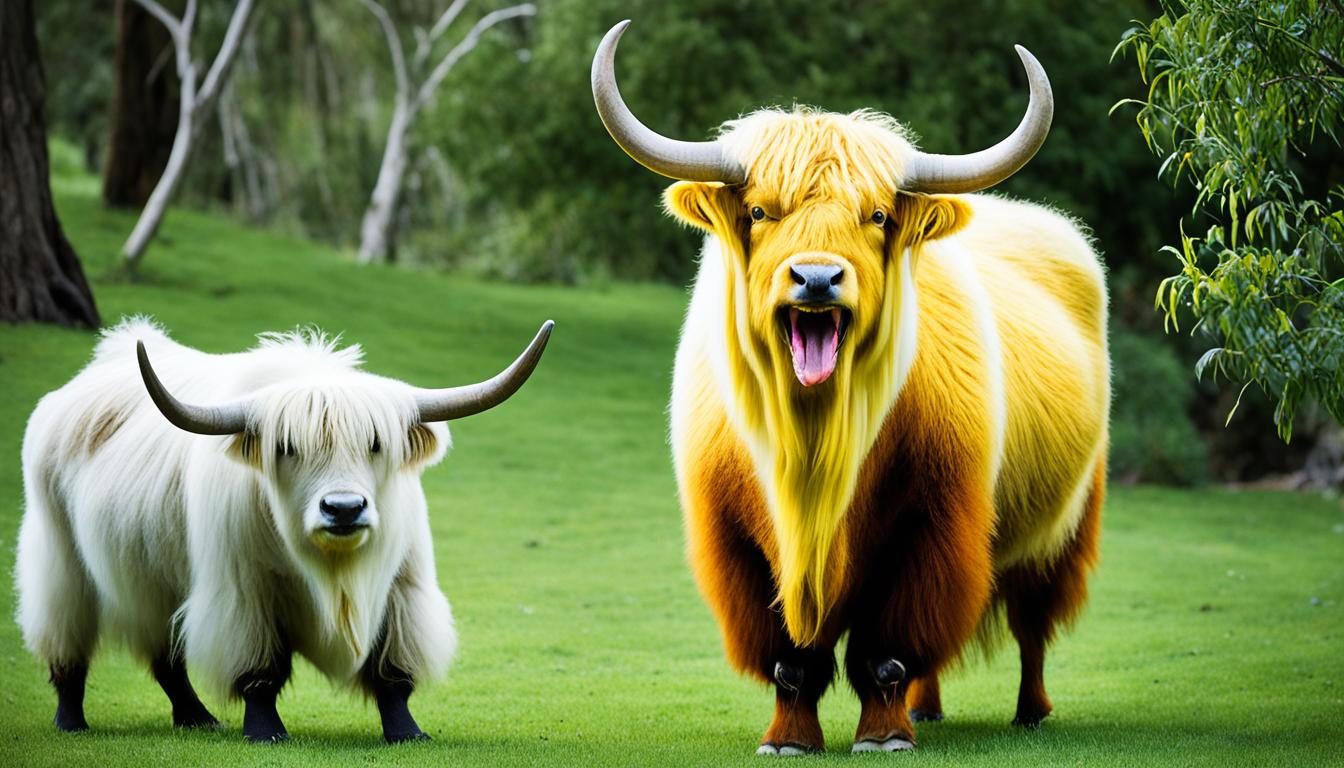Feathers are essential for your survival as a bird. They aid in flight, providing lift and stability with specialized wing and tail feathers. Insulating down feathers keep you warm, while the outer layer protects against the elements. Camouflage helps you hide from predators, and vibrant plumage plays a key role in attracting mates. Maintenance through preening guarantees your feathers stay in top shape. Discover how feathers have evolved to meet your needs in various environments.
Key Takeaways
- Feathers provide insulation, regulating body temperature and conserving energy in varying climates.
- Camouflage through plumage aids in predator evasion, enhancing survival chances.
- Specialized wing and tail feathers are essential for flight, enabling foraging and escape.
- Brightly colored feathers attract mates, promoting reproductive success and genetic diversity.
- Preening and molting maintain feather condition, ensuring optimal functionality and protection from the elements.
The Anatomy of Feathers

Feathers play an essential role in a bird's survival, and understanding their anatomy reveals just how intricate they are. Each feather consists of a central shaft called the rachis, which supports branching structures known as barbs.
These barbs connect through microscopic feather hooks called barbules, creating a cohesive and functional unit. Wing feathers, designed for flight, have a unique interlocking microstructure that enhances aerodynamic properties, vital for efficient movement.
On the other hand, contour feathers cover the bird's body, providing shape, color, and even protection against the elements. These feather structures grow from skin outgrowths called papillae, and birds regularly undergo molting to shed and regrow feathers, ensuring they remain functional throughout their lives.
Functions of Feathers in Flight
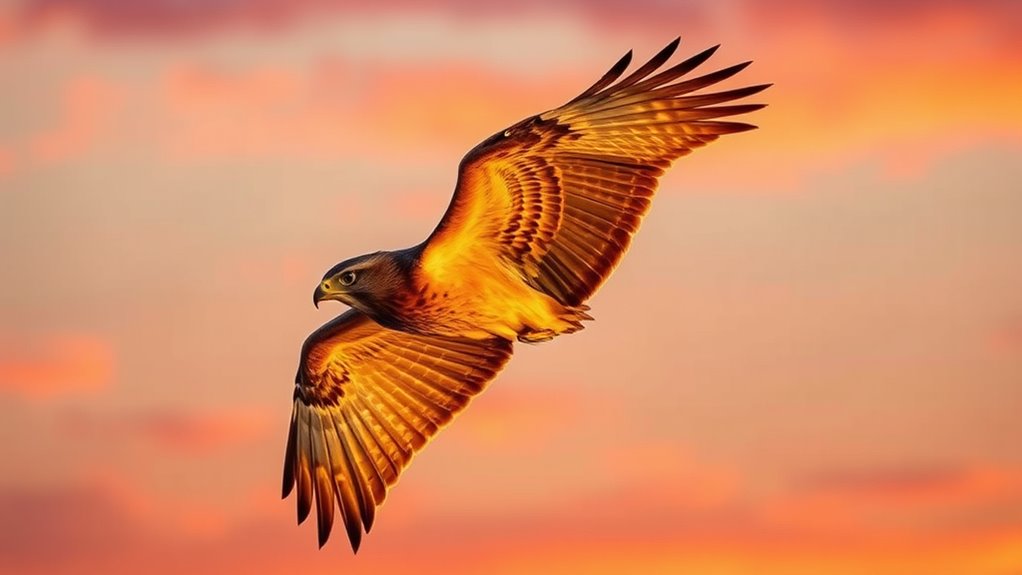
When birds take to the skies, their feathers play a significant role in achieving flight. Flight feathers, specifically the primary wing feathers, act as specialized airfoils that catch air during flapping, propelling you upward and forward.
The interlocking microstructure of these wing feathers reduces drag, allowing for greater speed and maneuverability. Tail feathers, often fan-shaped and asymmetric, help you steer and maintain stability, giving you precise control over your movements.
Contour feathers streamline your body's shape, minimizing air resistance and enhancing overall flight efficiency. The unique arrangement and structure of these feathers are essential for generating effective lift and thrust, important for traversing diverse environments and ensuring successful flight.
Insulation and Weather Protection

When you think about how birds survive in harsh climates, consider the insulating structure of their feathers.
These layers trap air and help regulate their body temperature, keeping them warm even in frigid conditions.
Plus, their weatherproofing mechanisms guarantee they stay dry and protected from the elements.
Insulating Feather Structure
To thrive in diverse environments, birds rely on the insulating properties of their feathers, which trap air close to their bodies. Insulating feathers, particularly down feathers, provide essential thermal insulation, helping maintain body temperature in cold conditions.
The arrangement of these feathers is important; overlapping layers minimize heat loss and enhance protection against harsh weather. Birds, like the Snowy Owl, showcase thick, downy plumage that's critical for survival in extreme climates.
Additionally, contour feathers create a barrier to prevent water from reaching the skin, keeping birds dry and warm. This combination of feather structure and arrangement not only aids in insulation but also plays a significant role in overall bird survival.
Weatherproofing Mechanisms
Birds don't just rely on insulation for warmth; they also employ a variety of weatherproofing mechanisms to protect themselves from the elements.
Their specialized uropygial gland produces an oily substance that they spread over their feathers, keeping them flexible and water-resistant. The layering of feathers, including down and contour feathers, creates an insulating barrier, while looser, puffy feathers trap air, enhancing insulation against extreme temperatures.
Birds cleverly arrange their feathers to shed water, preventing saturation and maintaining warmth in rain or snow. However, proper grooming and preening are essential.
These behaviors help birds maintain feather cleanliness and functionality, ensuring their weatherproofing mechanisms work effectively against harsh weather conditions.
Temperature Regulation Strategies
While many might think of feathers solely as a means of flight, they play an indispensable role in a bird's ability to regulate temperature and protect against the elements.
Birds rely on down feathers for insulation, trapping air to maintain body heat in cold conditions. During chilly seasons, they grow thicker plumage, enhancing their ability to withstand extreme weather.
Contour feathers form a weatherproof barrier, allowing water to roll off, keeping the bird dry. The uropygial gland produces oil that birds apply to their feathers during preening, improving flexibility and water resistance.
Proper feather arrangement through preening optimizes both insulation and weatherproofing, making it essential for effective temperature regulation. Consequently, feathers are crucial for survival in varying climates.
Camouflage and Predator Evasion
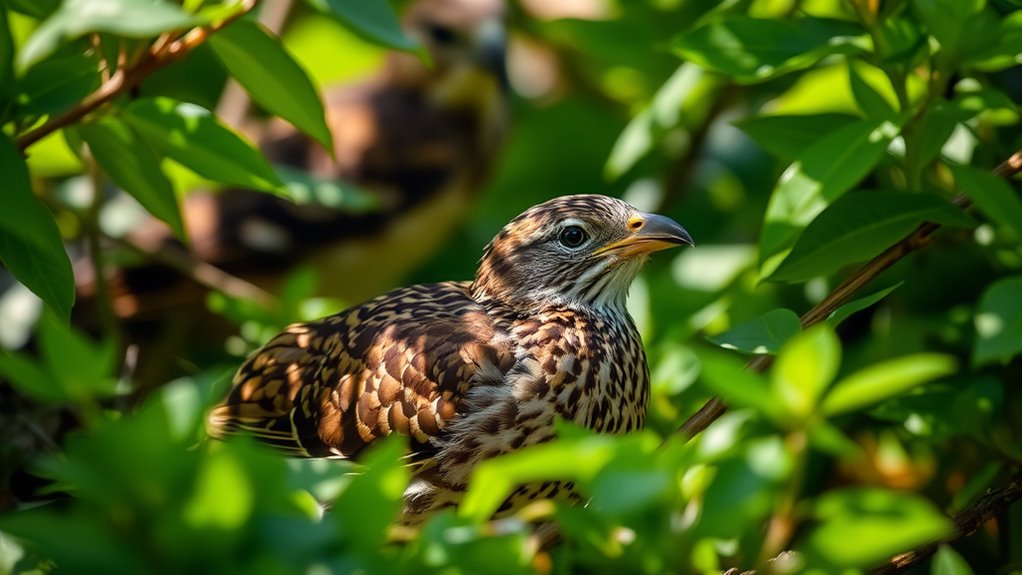
Camouflage plays an essential role in a bird's survival, as it helps them evade predators and thrive in their environments. Many bird species have evolved unique plumage that enhances their concealment. For example, ground foragers blend in with earthy tones, while seasonal color changes improve camouflage throughout the year.
| Bird Species | Camouflage Features |
|---|---|
| Common Nightjar | Mottled, bark-like feathers |
| Eastern Screech-Owl | Bark-like plumage |
| American Goldfinch | Seasonal color changes |
| Flame Bowerbird | Vibrant for mating, muted for evasion |
This camouflaged plumage is vital for nesting females and fledglings, ensuring their survival during vulnerable life stages. It's fascinating how feathers serve as a defense mechanism against predation.
Mating Displays and Social Interactions
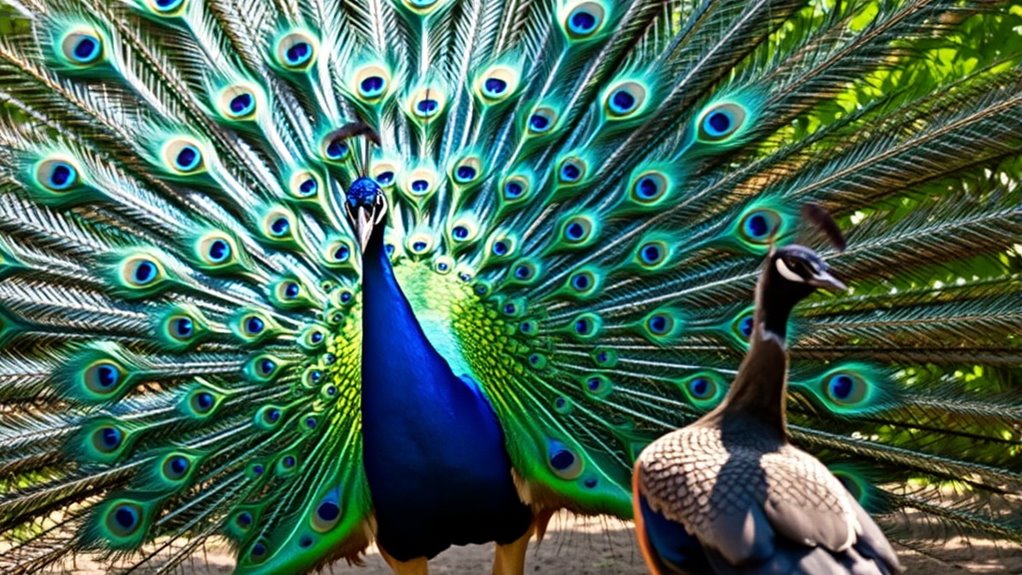
When it comes to attracting a mate, feather coloration and ornamentation are key players.
You'll notice that vibrant plumage often signals health and vigor, making it essential in courtship displays.
Color Signaling in Mating
Color signaling plays an essential role in the mating rituals of birds, as vibrant feathers catch the eye and convey important messages about health and genetic fitness.
Male birds often use their bright plumage to attract mates, showcasing their liveliness through stunning coloration.
Here are three key aspects of color signaling in mating:
- Health Indicators: Bright colors often indicate a male's health and genetic fitness, making them more appealing to females.
- Visual Appeal: Elaborate feather colors and patterns, like those of the Superb bird-of-paradise, enhance a bird's attractiveness during courtship.
- Sexual Selection: Females frequently prefer males with more vibrant plumage, driving the evolution of feather coloration and impacting social dynamics within species.
Feather Ornamentation and Attraction
Feather ornamentation greatly influences mating displays and social interactions among birds, as it not only showcases individual health but also enhances attractiveness to potential mates. Bright colors and intricate patterns often signal genetic fitness, making them essential in sexual selection. For instance, the Superb bird-of-paradise uses vibrant plumage to draw attention from females, while starlings employ structural coloration to stand out. Additionally, seasonal changes in feather coloration, like those in the American Goldfinch, play a role in breeding success. Socially, allopreening strengthens pair bonds and fosters flock cohesion.
| Feather Type | Function | Example Species |
|---|---|---|
| Brightly Colored | Attracts mates | Superb bird-of-paradise |
| UV Reflective | Enhances visual appeal | Starlings |
| Camouflaged | Provides protection | American Goldfinch |
Feather Growth and Maintenance
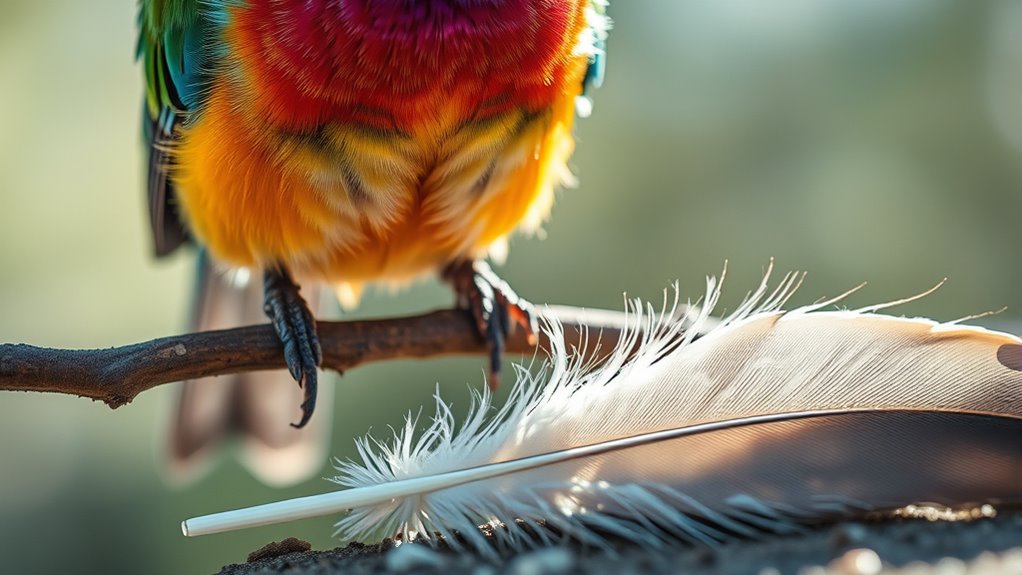
As birds navigate their environments, the growth and maintenance of their feathers play an essential role in their survival.
You'll find that feather growth occurs from skin outgrowths called papillae, which produce new feathers as protective sheaths shed. The cyclical process of molting allows birds to replace old feathers, ensuring their plumage remains functional for insulation and flight.
To maintain feather health, remember these key practices:
- Preening – Regular grooming helps keep feathers clean and aligned.
- Applying oils – Birds use oils from the uropygial gland to enhance water resistance.
- Monitoring feather condition – Check for any damage that could impact insulation and flight efficiency.
Through proper feather maintenance, birds can regulate body temperature and evade predators, vital for their survival.
Evolutionary Significance of Feathers

The evolutionary significance of feathers can't be overstated; they transformed the way birds interact with their environments. From their origins in theropod dinosaurs, feathers evolved into complex structures, enhancing flight capabilities and allowing various bird species to thrive. This evolution showcases remarkable adaptations, such as vibrant colors driven by sexual selection, which attract mates and guarantee genetic diversity. Additionally, specialized feather types improve camouflage and survival in diverse habitats.
| Evolutionary Aspect | Description |
|---|---|
| Flight Capabilities | Enhanced aerodynamic properties |
| Ecological Adaptation | Specialized feather types |
| Sexual Selection | Vibrant colors for attraction |
| Camouflage | Structural coloration |
| Fossil Evidence | Gradual evolution support |
Frequently Asked Questions
Why Are Feathers Important to Birds?
Feathers are essential for birds in several ways. They help you maintain body temperature by trapping warm air, keeping you cozy in cold weather.
Your wing feathers reduce drag, allowing for efficient flight and maneuverability.
Plus, the colors of your feathers can attract mates or help you blend in with your environment to avoid predators.
What Purpose Do Feathers Serve for a Bird?
Feathers serve several essential purposes for a bird. They enable you to fly, providing the lift and control needed during movement.
Feathers also insulate your body, keeping you warm in cold conditions. You can blend into your surroundings thanks to their coloration, helping you avoid predators.
Additionally, bright feathers attract potential mates, signaling your fitness. Plus, they keep you dry, as oil from your preen gland makes them water-resistant.
Can Birds Survive Without Feathers?
You might wonder if birds can survive without feathers. The truth is, while they can endure short periods without some feathers, it's a tough situation.
Without feathers, they lose insulation, making them vulnerable to extreme temperatures. Flight becomes nearly impossible, limiting their escape from predators. Their waterproofing fails, exposing them to wet conditions.
Plus, they lose camouflage, increasing predation risks. Overall, feathers are essential for a bird's survival in the wild.
How Do Feathers Protect Birds?
How do you think birds stay warm and dry in harsh weather? Feathers play a key role in protecting them. They act as a barrier against cold and moisture, trapping air for insulation.
The arrangement of feathers keeps birds buoyant during rain and snow. Plus, some birds produce a waterproof powder to enhance their plumage.
Regular grooming keeps their feathers clean, ensuring they function effectively to shield against the elements.
Conclusion
In the grand tapestry of bird survival, feathers play a fantastic, fundamental role. From flight to fashion, insulation to evasion, these remarkable structures are more than mere adornments. They're essential for thriving in diverse environments. As you marvel at these magnificent creatures, remember how their feathers fuel their freedom, fashion their forms, and foster their future. So next time you spot a bird, appreciate the incredible impact of its feathers—nature's beautiful badge of survival!



